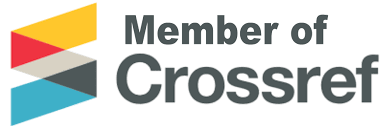Strategi Manajemen Pelanggan Internet Rumah Pascabayar Berdasarkan Faktor yang Berpengaruh Terhadap Churn
Abstract
Keywords
Full Text:
PDFReferences
Ahn, J. H., Hang S. P., Lee YS. (2006). Customer churn analysis: churn determinants and mediation effects of partial defection in the Korean mobile telecommunication service industry. Telecommunication Policy Journal. 30(10-11):552-568.
APJII. (2017). Penetrasi dan perilaku pengguna internet Indonesia [presentasi]. Jakarta (ID): Asosiasi Penyelenggara Jasa Internet Indonesia.
Backiel, A., Baesens, B., Claeskens, G. (2016). Predicting time-to-chum of prepaid mobile telephone customers using social network analysis. Journal of The Operational Research Society. 67(9):1135-1145.
BAPPENAS. Bappenas Sosialisasikan Rencana Pita Lebar Indonesia 2014-2019 [Website]. (2014). Retrieved from https://www.bappenas.go.id/id/berita-dan-siaran-pers/bappenas-sosialisasikan-rencana-pitalebar-indonesia-2014-2019.
Chen, I. J., Popovich, K. (2003). Understanding customer relationship management (CRM) people, process, and technology. Business Process Management Journal. 9(5): 672-688.
Hosmer, D. W., Lemeshow, S. (2000). Applied Logistic Regression. Second Edition. New York: John Wiley & Sons.
Jamal, Z., Bucklin, R. E. (2006). Improving the diagnosis and prediction of customer churn: a heterogeneous hazard modelling approach. Journal of Interactive Marketing. 20(3-4):16-29.
Pria Kotler, P. (2005). Manajement Pemasaran. Jilid I dan II. Jakarta: PT. Indeks.
Kumar, V., Werner, R. (2012). Customer Relationship Management: Concept, Strategy and Tools. Berlin: Springer.
Lunn, P. D., Lyons, S. (2018). Customer switching intention for telecoms services: evidence from Ireland. Heliyon Journal. 4(5): e00618.
Madden, G., Savage, S. J., Coble-Neal, G. (1999). Subscriber churn in the Australian ISP market. Information Economics and Policy Journal. 11(2):195-207.
Rangkuti, F. (2002). Measuring Customer Satisfaction: Gaining Customer Relationship Strategy. Jakarta: Gramedia Pustaka Utama.
Sanjaya, R. (2015). Analisis hubungan antara customer relationship management dengan loyalitas nasabah Tabungan Siaga Kerjasama (Unpublished master's thesis). IPB University, Bogor, ID.
Sever I. 2015. Importance-performance analysis: A valid management tool?. Tourism Management. 48: 43-53.
Suhartono, D., Saefuddin, A., Sumertajaya, I. M. (2013). Survival analysis of customer in postpaid telecommunication industry. Indonesian Journal of Statistics. 18(1):1-10.
Sumarwan, U. (2011). Perilaku Konsumen: Teori dan Penerapannya dalam Pemasaran. Bogor: Ghalia Indonesia.
Wong, K. K. (2011). Using cox regression to model customer time to churn in the wireless telecommunications industry. Journal of Targeting, Measurement and Analysis for Marketing. 19: 37-43.
DOI: https://doi.org/10.35314/inovbiz.v8i2.1478
Refbacks
- There are currently no refbacks.
Copyright (c) 2020 Didik Prianto

This work is licensed under a Creative Commons Attribution-NonCommercial-ShareAlike 4.0 International License.
This Journal has been listed and indexed in :
Copyright of Jurnal Inovasi Bisnis (p-ISSN : 2338-4840, e-ISSN : 2614-6983)

Inovbiz: Jurnal Inovasi Bisnis is licensed under a Creative Commons Attribution-NonCommercial-ShareAlike 4.0 International License.
Editorial Office :
Pusat Penelitian dan Pengabdian kepada Masyarakat
 Politeknik Negeri BengkalisÂ
Jl. Bathin alam, Sungai Alam Bengkalis-Riau 28711Â
E-mail: inovbiz@polbeng.ac.id














